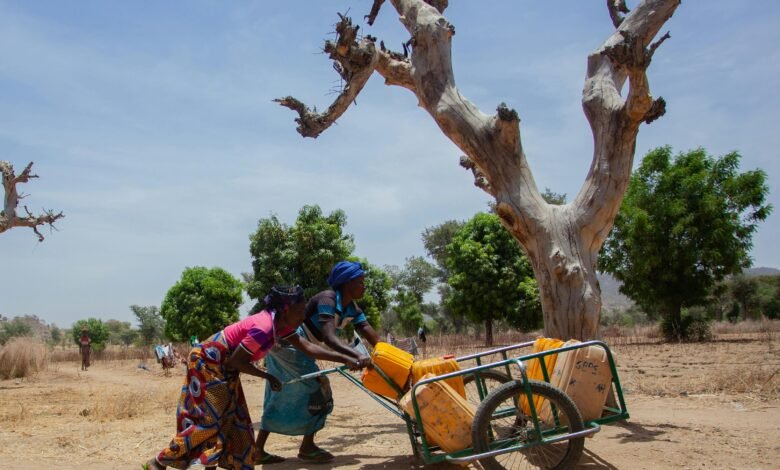Nautapa – The Nine Hottest Days of Summer: Tradition, Science, and Survival

In India, the arrival of summer brings not just scorching heat but also a unique cultural and meteorological phenomenon known as Nautapa (or Nau Tap). Translating to “nine intense heats,” this nine-day period is deeply rooted in Hindu astrology and folklore, believed to mark the sun’s transition into the Rohini constellation. Beyond its mythological significance, Nautapa is linked to weather patterns, agricultural practices, and age-old survival strategies. This article explores the multifaceted aspects of Nautapa, blending tradition with modern scientific perspectives.
The Mythological Roots of Nautapa
Nautapa holds a sacred place in Hindu mythology. According to ancient texts, the Sun God (Surya) enters the Rohini Nakshatra (a lunar mansion) during this period, amplifying solar intensity. Folklore suggests that the Earth “absorbs” the sun’s energy during these nine days, which later influences monsoon rains. Farmers and astrologers have long observed Nautapa as a predictor of rainfall, believing that excessive heat during this phase ensures timely and abundant monsoons. Stories also describe how sages and communities performed rituals to appease deities, seeking relief from the blistering heat and blessings for agricultural prosperity.
Nautapa and Agricultural Significance
For agrarian communities, Nautapa is more than a weather event—it’s a critical indicator of the upcoming monsoon cycle. Traditional wisdom posits that the intensity of heat during these nine days directly correlates with the quantity and distribution of rainfall. Farmers monitor temperature spikes, soil dryness, and wind patterns to predict crop viability. For example, a fiercely hot Nautapa is thought to “purify” the atmosphere, leading to fertile soil and robust harvests. However, climate change has disrupted these age-old patterns, leaving farmers grappling with unpredictable weather and forcing a reevaluation of traditional forecasting methods.
Health and Lifestyle Practices During Nautapa
The extreme heat of Nautapa demands careful health management. Ayurveda prescribes specific dietary and lifestyle adjustments to combat dehydration and heatstroke. Cooling foods like sattu (roasted gram flour), coconut water, and buttermilk are recommended, while spicy or oily meals are avoided. Communities in regions like Rajasthan and Gujarat follow rituals such as covering water pots with neem leaves to keep liquids cool and germ-free. Modern health experts echo these practices, advocating for hydration, light clothing, and limited outdoor activity during peak hours. These traditions highlight a blend of practicality and cultural heritage in mitigating summer’s challenges.
Cultural Rituals and Regional Observances
Nautapa is woven into India’s cultural fabric through regional festivals and customs. In Uttar Pradesh and Bihar, devotees offer water and flowers to the Sun God at sunrise, chanting hymns to seek protection from heatwaves. In coastal areas, communities celebrate with prayers for rain, often culminating in communal feasts. The festival of Chhath Puja, though not directly linked to Nautapa, shares thematic similarities in its reverence for solar energy. These rituals underscore a collective acknowledgment of nature’s power and humanity’s reliance on its rhythms.
Nautapa in the Context of Climate Change
While Nautapa has historically been a period of predictable intensity, climate change has rendered its patterns erratic. Rising global temperatures, prolonged heatwaves, and delayed monsoons challenge traditional beliefs about the nine-day cycle. Scientists now study Nautapa as a microcosm of broader environmental shifts, using data to understand how urbanization and carbon emissions exacerbate extreme weather. This intersection of tradition and modernity calls for adaptive strategies, such as water conservation campaigns and heat-resistant crop varieties, to safeguard both cultural heritage and ecological balance.
Urban Challenges: Surviving Nautapa in Cities
Urban populations face unique struggles during Nautapa. Concrete landscapes, reduced green cover, and heat island effects amplify temperatures, making cities like Delhi and Chennai unbearable. Power demands soar as air conditioners run nonstop, leading to frequent blackouts. Local governments now implement heat action plans, including shaded public spaces, hydration stations, and awareness drives. Meanwhile, tech-driven solutions like smart grids and energy-efficient cooling systems are gaining traction, reflecting how modernity adapts to coexist with ancient seasonal cycles.
Nautapa vs. Global Heatwaves: A Comparative View
Nautapa shares similarities with heatwaves worldwide, such as Europe’s Lucifer heatwave or North America’s “heat domes.” However, its cultural integration sets it apart. Unlike purely meteorological phenomena, Nautapa is embedded in spiritual and agricultural practices, offering lessons in resilience. For instance, traditional Indian architecture, with its courtyards and thick walls, naturally combats heat—a concept now inspiring sustainable design globally. This duality positions Nautapa as both a local challenge and a universal case study in climate adaptation.
Conclusion:
Nautapa is a testament to humanity’s enduring relationship with nature, blending reverence, pragmatism, and adaptability. While its mythological and agricultural roots remind us of ancient wisdom, contemporary climate realities demand innovative solutions. By bridging tradition with science—reviving water-saving practices, investing in green infrastructure, and honoring cultural rituals—we can navigate the scorching days of Nautapa while fostering a sustainable future. In this balance lies the key to surviving not just nine days of heat, but an era of environmental uncertainty.
